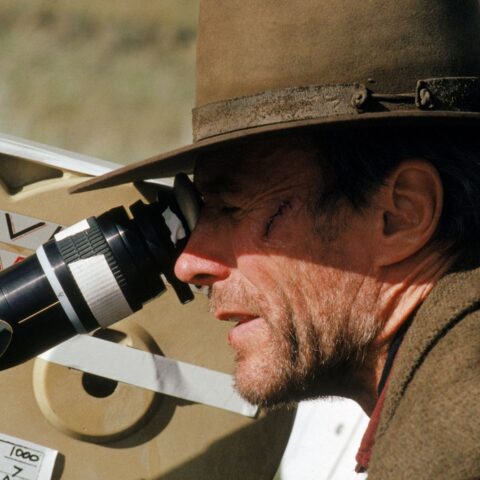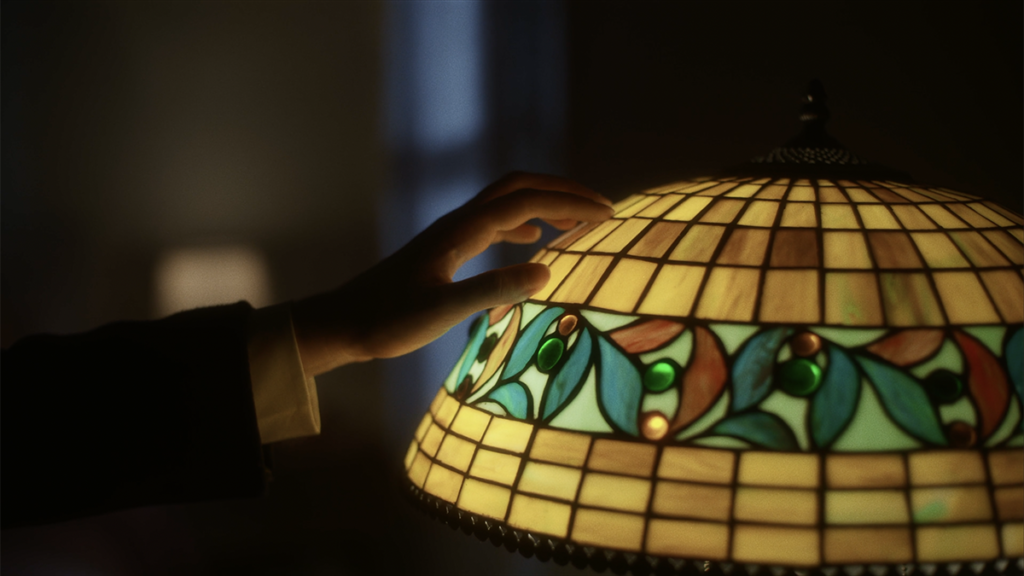
Nicole Catania’s short film “The Only Way Out Is Through” began as a deeply personal project, initially meant to remain private as she processed grief and complex relationships through writing. However, the script resonated so strongly with those who read it that it ultimately evolved into a compelling short film. In this interview, Catania discusses her journey from private catharsis to public storytelling, the challenges of portraying raw emotions on screen, and the collaborative efforts that brought her vision to life. The film stands as a powerful exploration of family trauma and healing, captured with authenticity and emotional depth.
You mentioned that “The Only Way Out Is Through” began as a deeply personal project. Can you elaborate on the specific experiences or emotions that inspired you to write this story? What made you decide to transform it into a short film?
When I first started writing the script, it was more so a way to work out for myself a level of grief I’d been holding around specific dynamics and patterns I’d experienced. I wanted to look at all of these people — united by something so specific, but driven to such drastically different responses, different values, different lives — and dig into them and turn them over and find every little crevice. I wanted to see them so I could tell them I loved them. For all of their differences, all of their mistakes, all of the ways they distance and hurt one another. I truly had no intention of sharing it, much less actually making the film.
“The Only Way Out Is Through” is actually the first piece of writing of mine that I’d ever shared (and I’ve been writing since I was a child). It was met with such generosity and excitement. People kept telling me I should make this. And I didn’t hear them for a while or I’d brush them off. Until one day, it all just clicked for me and I had this sense of, “Oh no, I have to make this.”
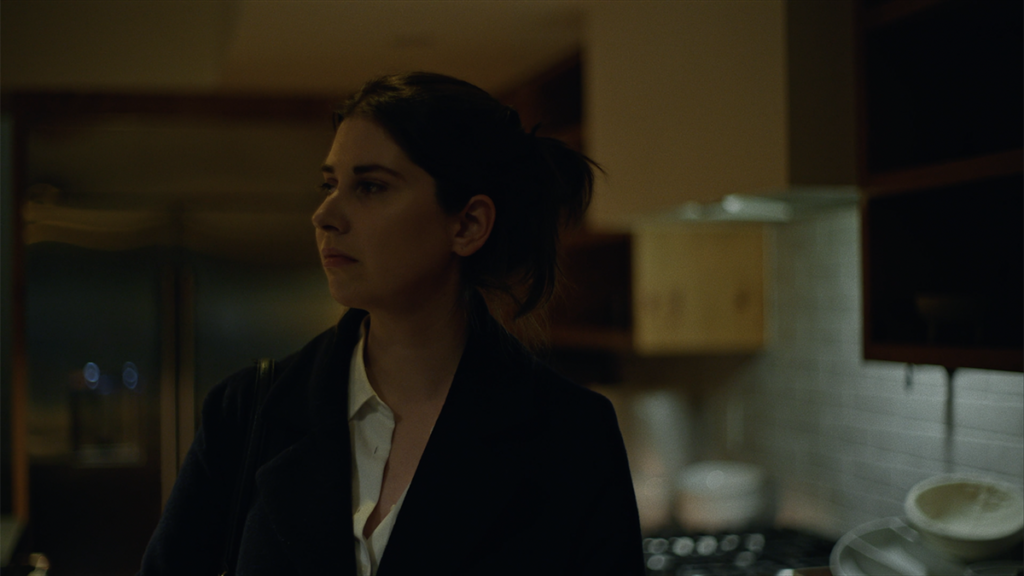
How did you approach the process of developing the characters in the film? Did any particular experiences or people from your life influence their creation?
Well, I do actually have a lot of brothers in real life! Even more than are in the movie! That’s where the inspiration behind the general relationship dynamics came from, but these characters are very much not my real life brothers (to be clear).
A lot of fleshing out the characters came from Celia — our lead. What qualities in a person might trigger something negative in her, something full of rage or resentful? What would she empathize with, what would she feel sensitive towards? Is there any person here that might have qualities that make her feel safe or unsafe? And how can we turn all of those up into overdrive for this pivotal moment of her life?
3. The film deals with heavy themes such as family trauma and the lingering effects of an abusive past. How did you navigate portraying these sensitive topics on screen, both as a writer and as an actor?
It was difficult. There are moments in the film where I still have to plug my ears for a moment because it’s hard for me to hear those things. But also, that’s exactly what I wanted to do. I wanted to share these dark and painful parts of us. I wanted to say the hard part out loud. And yes, in doing so there is the possibility of upsetting people, of not receiving the response you maybe wanted or needed. There’s the possibility of further distancing yourself or breaking something. And on the other side of that, there’s also this really meaningful possibility for healing, for coming together, for being seen. In this case, at the very least, the opportunity to let something that’s held on to you for so long go and begin healing on your own. And in turn, maybe we learn that those shadow-ey, dark places in us are also meaningful and worth loving because they make us the most human.
As an actor, I felt so lucky to be surrounded by such a generous, kind and collaborative group of people. I knew I was safe and supported in delving into these feelings and circumstances and could also count on my fellow actors to jump in with me — which even added a sense of play and fun to it all despite the subject matter. Some of the harder moments are some of my favorite as an actor though, too. I love those moments when it’s so hard to say something that you feel like you have to choke it out. Or when you need to say something so badly that it explodes out of you. There’s something so freeing and interesting about giving over to feeling and impulse that way.
The synopsis mentions that a familiar relic from Celia’s childhood triggers a flood of memories. How did you and your cinematographer approach visualizing these internal, emotional moments? Can you describe the cinematographic style you used to convey the film’s themes?
First off, I just have to shout out Liza Gipsova — our cinematographer. If there’s any one true thing about this film, it’s that is looks beautiful. And that’s all her talent, vision, heart and collaboration.
When Liza and I were working on how to approach visualizing these internal, emotional moments, we really leaned into talking about a few different concepts: Moments that felt voyeuristic (like we were outside watching something we shouldn’t) versus Moments that felt like we were privy to perspective and what someone might be thinking/feeling. Expansiveness versus claustrophobia (Where might there be breath and space in a moment? And when is there absolutely none?)
In some moments, especially when Celia is alone on screen, exploring these ideas really relied on the lighting and color. Leaning into the moodiness, highlighting certain objects. There were also some handheld tracking moments where we really felt privy to Celia’s experience. I really wanted it to feel like the viewer could breathe on her ear and she’d feel it. Those were some of my favorite moments to shoot — everything with Liza felt like a dance.
In the ensemble moments, these concepts really came down to what moments are at a distance, how close do we get to somebody, how long do we stay with them, etc. Lauren, for example, never gets a frame to herself.
The title “The Only Way Out Is Through” is powerful and evocative. Can you explain how this phrase encapsulates the film’s central message? How do you hope it resonates with the audience?
I’m so glad the title resonates. I actually had such a difficult time coming up with a title and when this came up in my brain, that was it. And then I started seeing the phrase everywhere. People still send me photos or videos of the phrase coming up in tv shows or movies, in books they’re reading, at the ballet (true story!).
But I think the phrase is heard and seen so much because it holds a really difficult truth. The way out of difficult or painful situations, the way out from the paralyzing fear, anxiety and anger that comes with trauma, is to move through them. As much as we wish we could, we can’t just hop over them or turn a blind eye. They live in us. And also, we can’t stew in them. We can’t allow them to paralyze us and keep us from living.
I think it encapsulates the film’s central message by offering hope. That, yes, these painful things exist in our lives and they will continue to. But when we find the courage to face these difficult moments in life — no matter how painful or messy or complex they might be — there’s something on the other side. There’s release, relief, hope, something. At the very least, you can keep moving and see what happens from there. I like to think it’s an offering of hope.
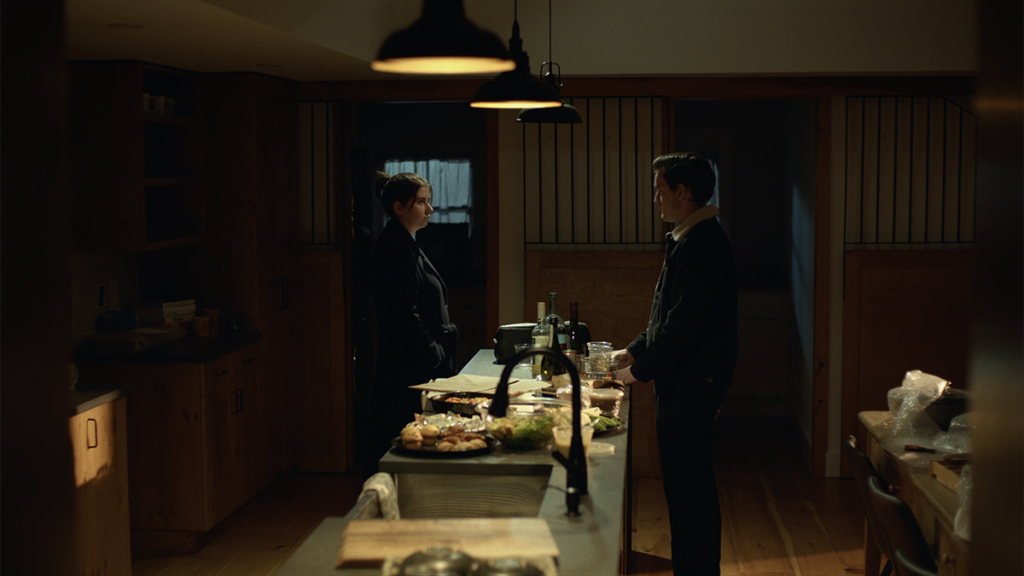
This film marks your directorial debut. What were some of the biggest challenges you faced in transitioning from an actor to a director? How did your experience as an actor inform your directing style? You emphasized the importance of collaboration in the creation of this film. Can you share some insights into the collaborative process with your cast and crew? How did their contributions shape the final product?
Yes! I think part of me always knew I was called to direct, but I really struggled with imposter’s syndrome. Who was I to tell other actors what to do? Who was I to think that my vision was one worth sharing? Especially when there are so many others who are far more experienced, went to film school, are just generally better than me, right?
And it just took getting over that. The fear still ate away inside of me, of course. But I wanted to do it, I needed to do it, and at some point you just have to do it. And the moment I let myself just do it, it became so fun. My vision became so clear. The process became so collaborative. I think I always considered the director as “The Boss”, you know? But it doesn’t have to be that way. I have a vision I want to share, I have ideas about how to share it, and then others come in with their creativity and their individuality and they make every vision I have even better.
Leaning into that collaboration was also key with working with the actors, especially because I was also acting. But that’s where I think there’s a really sweet spot. Firstly, I know how to talk to actors because I am one. We already have a shared language and experience that facilitates a lot of ease and trust. And second (my favorite), is that I can direct the scene by just being present as an actor. I can get a reaction or an authentic and impulsive moment out of someone just by being right there with them in the moment and giving them what they need. There are even some takes where I’d throw a line in or say something unscripted I knew they’d respond to. I’d also make sure we had takes where they were encouraged to ad-lib or lean into their understanding of a moment that maybe wasn’t obvious to me. I think a really funny dynamic between two of the brothers emerged out of that sense of freedom and play — it definitely wasn’t in the script. But it was perfect. It was authentic. It made me laugh.
To me, directing is all collaboration, it’s all play. And I love doing it.
You wore multiple hats in this production—writer, director, actor, and co-producer. How did you manage the different responsibilities, and how did each role inform the others throughout the production process?
It was so tough. Honestly, it was too much. And I learned a lot. My hope going in was that I’d be able to take off the producer hat as we were approaching and once we were on set, but that was more difficult than I anticipated. Mostly just because I wanted to make sure everyone was taken care of. And that takes a lot of energy.
In pre-production, writing and directing really helped, I think, in communicating my vision. Yes, I wrote the whole thing, but then I also got to draw the whole storyboard out. It really didn’t give a lot of space for the vision to get lost or murky.
There were so many positives about acting and directing at the same time — I know I mentioned them previously. But I also had a major learning lesson. With all of the ensemble scenes, I wanted to make sure that all of the other actors were comfortable and felt good (producer brain) so we shot all of their coverage first and all of mine last. And it’s a long night, it’s January in New York. I’m cold, I’m tired. I’m probably not going to give my best performance. And I realized that if it was any other actress playing the role I played, as a director, I would have wanted to prioritize her coverage — because that’s the story. A big learning lesson and one I’ll hold on to for next time.
The film seems to be not only a journey for the characters but also for you personally. What was the most challenging emotional moment for you during the making of this film? How did you navigate that?
The most challenging emotional moments I had while shooting were not the ones I was expecting! I really expected the ensemble moments to be extremely difficult or to have some major impact on me. I really expected [spoiler alert!] the smashing of the lamp to be a huge catharsis. And neither of those moments really played out that way for me, personally.
The moments that struck me the most while shooting were in the mother’s bedroom. Our production designer and assistant (Shelton Lindsay and Diego Barnes) had created this incredibly intentional bedroom. And I remember filming a take and looking at the nightstand and noticing this small pair of ceramic shoes and a stained, empty wine glass. Or just walking through, taking in the mostly packed up kitchen. Those moments really took the air out of me in a way I didn’t expect.
Stepping further back, though, the biggest part of this journey for me — the most difficult and the most rewarding — has been confronting limiting beliefs I’ve held about myself, as an artist, as a storyteller, as a person in relationship with other people. It’s been over a year and a half since we filmed this and I am a remarkably different person and artist than I was when I made this. And that growth is so much because I made this. My biggest challenge was my own fear and self-doubt. And the only way I know how to navigate that is by being kind and compassionate and courageous and doing it all anyway.
What do you hope viewers take away from this film, especially those who might see parts of their own experiences reflected in the story? Have there been any reactions from early viewers that particularly stood out to you?
I think part of what was so formative for me about movies was the way they made me feel seen. When I saw people on screen who had experiences similar to mine, faced similar challenges, and were messy and complicated and so so human, I knew I wasn’t alone. I knew there was a meaningful life for me out there. Movies gave me a safe place for my imagination to run wild and they gave me so much hope.
However this movie takes on its own life with people — it’ll make me happy. I hope it offers them a space to connect with or look at the darker, more painful parts of themselves and offer themselves compassion and grace and love. I hope it offers the space to be messy, to feel the hard things, to say the things that have gone unsaid, and through it all, continue to hope.
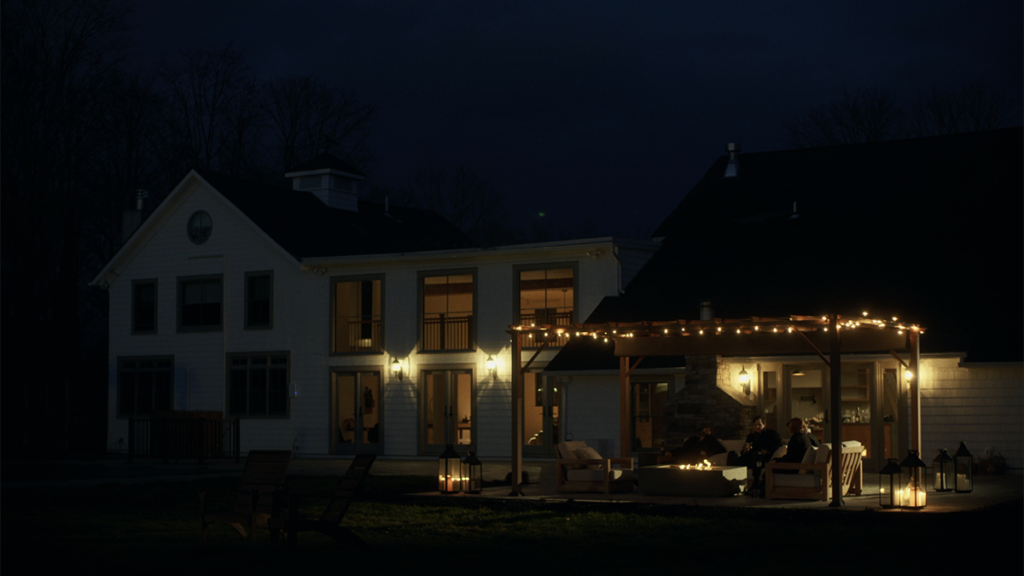
I actually step out of the theatre every time it plays — I can’t watch it with other people. So if there are any live, in the moment reactions, I haven’t heard them! However, I did have this woman approach me recently after a screening. She was older, told me she had been recently widowed, told me she was moved and asked what called me towards stories of grief. And I was so moved and floored that she approached me at all. But I think that’s exactly it — grief is the most universal experience there is. We will all feel it. There is no escaping it. And yet — it’s is the most uniquely painful, individual experience there is that no one will really truly understand it or experience it the way you do. And that could be isolating. Or that could be amazing. We will never run out of stories to tell or conversations to have about grief.
You’re currently in pre-production for your next short film, “Psychopomp”. Can you give us a sneak peek into what that film is about and how it compares to “The Only Way Out Is Through” in terms of theme and tone?
Well, it also has to do with grief — haha! “Psychopomp” follows a young couple who connect over a mushroom trip and find themselves dancing around life and death, love and grief. It’s very different than “The Only Way Out Is Through” despite the similar theme. It’s much more intimate and a little less grounded in reality.
Since making “The Only Way Out Is Through,” I’ve found love and grief to be far less practical than maybe I once did. “Psychopomp” has come more from a place of wanting to explore the parts of love and grief that don’t make sense, that extend beyond us and aren’t bound to reality.
I love it. I love the team I’m working with. And I am so excited to make it.
How do you see yourself evolving as a filmmaker after this project? Are there specific genres or themes you’re excited to explore in the future?
I really only feel my work (and self) as a filmmaker becoming clearer and bolder. Just after making my first film, you know, one of the biggest things is just a sense of self-trust. I know what I’m doing and I have something meaningful to share and that I’m excited to share it.
I do think I’m called towards certain themes for a reason. I have a feeling I won’t ever stray far from grief and love, families and romance. But, who knows? Maybe I’ll prove myself wrong. I’d love to work on a feature film, something longer form. I have so much written, but nothing I’m quite called to make yet. I’d love to lean into romance at some point. Share some love stories.
There’s always so much stirring around in me. I’ll be just as surprised as anyone else at what will come out of me in the future.
Reflecting on the entire experience of creating this film, what is the biggest lesson you learned? How do you plan to apply that lesson to your future work?
The biggest lesson I learned is to trust yourself. You know why you were called to do this. That isn’t a fluke. And surround yourself with people who believe in your vision as much as (if not more than) you do. Listen to what they have to say and really take it in — all of it. The ideas, constructive criticisms, questions, and yes, even the compliments. Be curious about them, believe in them.
I can already tell — and I hope it only continues to grow — that this lesson is making my work less self-conscious, more expansive, even more collaborative. I’m not operating from a place of fear and that is so liberating. And I hope that will give others permission to feel the same and that we can make something deeply meaningful together.

You mentioned that you’re more interested in the heart than the brain and that you believe the best art comes from love, passion, courage, and grit. How do you stay connected to these values in the often challenging world of filmmaking?
I think people refer to it as our “lizard brain” — the emotional, impulsive, reactive parts of ourselves. I remember all the time growing up being told not to act with my lizard brain. We’re told so much to be practical, reasonable, level-headed. But nothing in life is practical! Nothing about being human is reasonable! I’m not interested in what’s level-headed. I’m interested in what’s eating away at us, what’s making our hearts pound and our heads spin, what’s turning our lives upside down and making us wild. I want the lizard brain, the innermost parts of ourselves that want and need and deserve to come out and be seen. Those are the people I want to watch. Those are the people I want to love.
And I think it takes passion and courage to tell those stories, to expose those parts of ourselves. Because we’ve been taught for so long to tame them, to quiet them down, even to shame them. But I think they are so exciting and so beautiful. And I think ultimately when we are true to ourselves, when we create and move in our authenticity and when we do so unselfconsciously, we challenge what’s challenging about the world of filmmaking. There’s always a structure set up for us, a set of rules to play by. But it limits us, it discourages us, it keeps so many people and so many stories out. It takes a lot of love, a lot of courage, a lot of grit and a lot of passion to create the art, the life, the world you want to make. I believe with my whole heart that it’s worth it.
Given your journey so far, what advice would you give to aspiring filmmakers, particularly those who are trying to tell deeply personal and challenging stories?
Say the scary thing. Be curious about resistance and compassionate with yourself in moments you haven’t broken through yet. You have something meaningful to share. And when you find the courage to put it out there, you’ll find people who want to share it with you.
Official website of Nicole Catania – https://nicolemcatania.com
